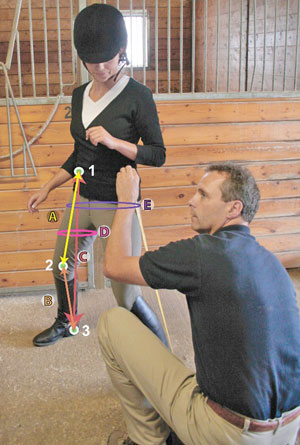
Simply purchasing a saddle that may have been ‘customized’ to fit your horse with a narrow, medium, or wide tree and panel flocking that has been somewhat moved around to accommodate the horse’s back shape does not a custom product make. Neither does your determination of seat size (anywhere from 16” to maybe 19”) with special colour combinations of your choice. There is nothing truly custom about these very superficial choices, I’m sorry. These are personalized options that absolutely will be according to your tastes and requests, however, true customization begins inside the saddle with the tree itself.
For a truly custom saddle, the considerations (particularly for a dressage saddle) need to go beyond those mentioned above to include:
- Twist (that part of the saddle that you feel between your upper inner thigh) – to accommodate the articulation of the hip bones to allow the leg to hang straight
- Stirrup bar placement (women tend to need extended stirrup bars to allow their legs to hand straight because most women’s upper legs are longer than their lower legs which causes them to have a centre of gravity further forward and tends towards the ‘chair seat’ position)
- Cantle height to accommodate both the size and position of the gluteus (butt) muscles
- Seat foam (some women will need more of a ‘push’ from behind to allow them to sit without collapsing back into the saddle because again of the size and shape of the female gluteus muscle and length of the tailbone.
- Flap length and position to ensure proper placement of the leg (in front and behind the leg there should be even amounts of flap showing.
For true customization we even offer our ‘plaster cast’ method. Read the full article here.
~ by Sabine Schleese, B.Sc., MBA for Jochen Schleese CMS, CSFT, CSE, courtesy of Saddlefit 4 Life
